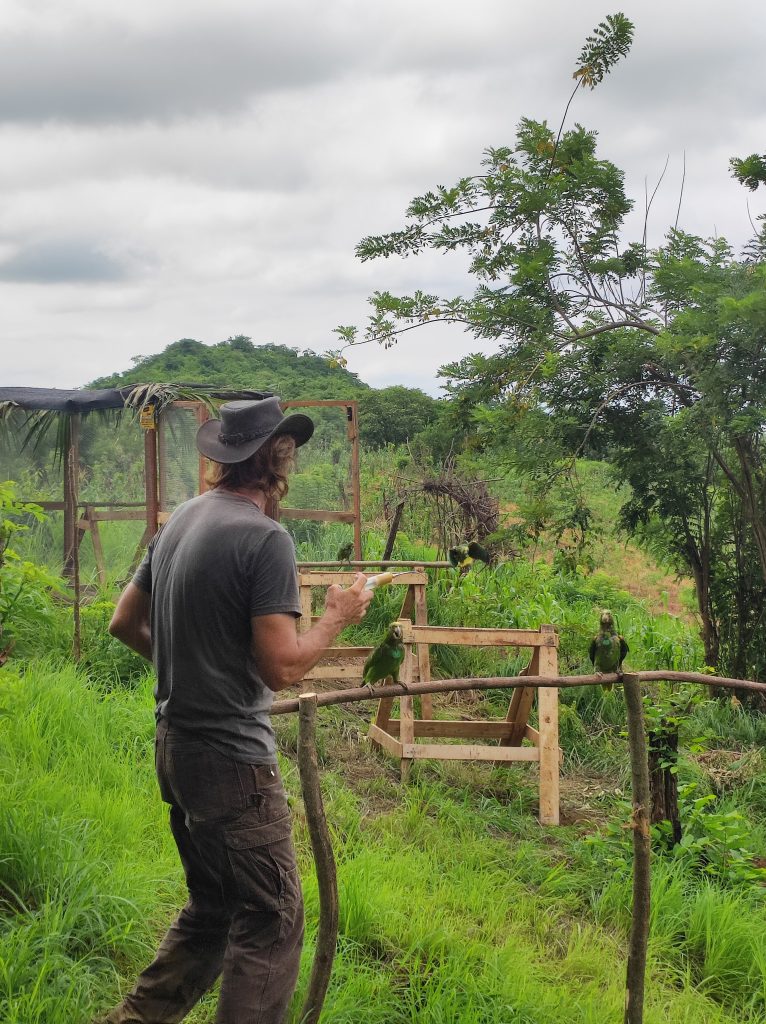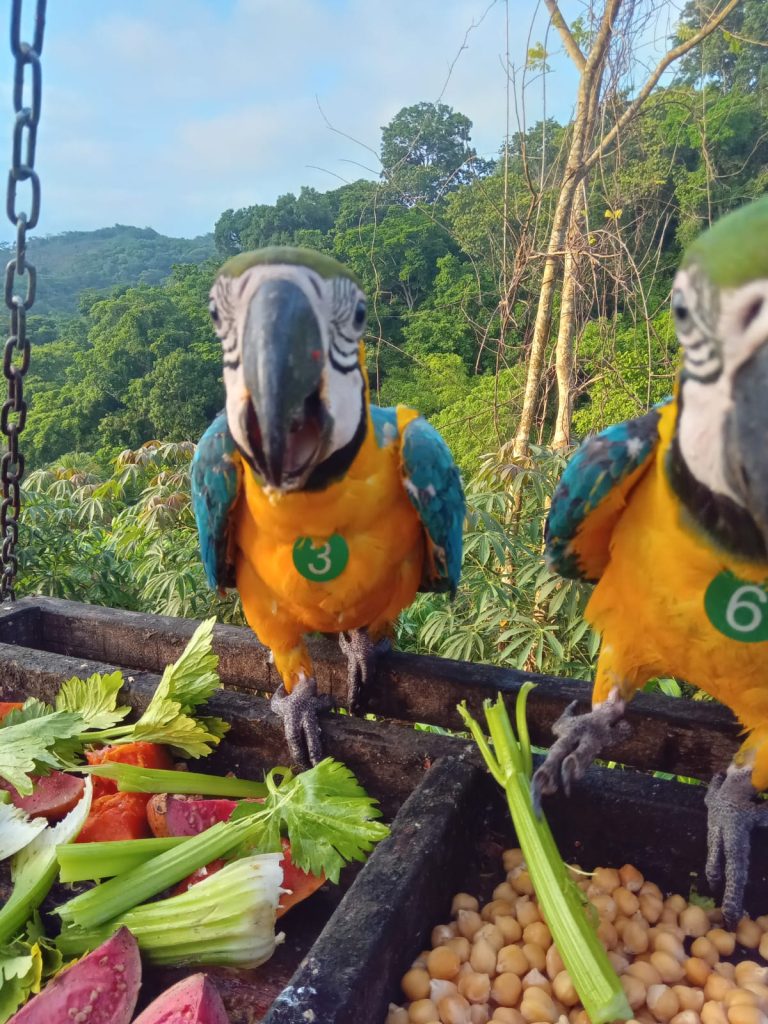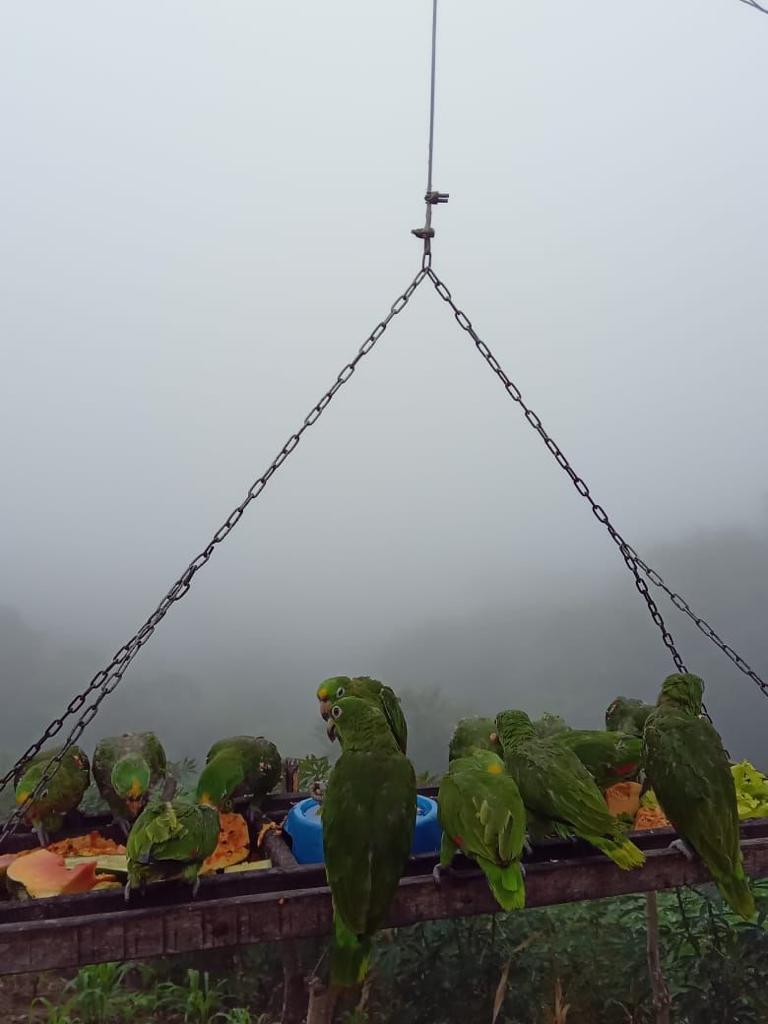What Does It Take to Release a Parrot?
![[:es]DSCN7675[:]](https://loros.org/wp-content/uploads/2025/05/DSCN7675-scaled.jpg)
How We Prepare Every Step at Loros Wildlife Sanctuary
Releasing a parrot is not just “opening a door.”
It’s the end (and the beginning) of a complex, delicate, and deeply ethical process.
At Loros Wildlife Sanctuary, every release is a thoughtful decision, guided by the animal’s welfare, safety, and real ability to survive in the wild.
Because freedom is not an event — it’s a shared responsibility.
This is not a protocol — it’s a general idea of what’s required
This article is not a technical protocol or a formal guide for other institutions.
Its purpose is to give the general public a clear understanding of the minimum requirements for responsibly releasing parrots that have been rehabilitated after surviving illegal wildlife trafficking.
A new opportunity takes time
Most parrots who arrive at the sanctuary were victims of trafficking:
they lived in cages, often alone, with clipped wings, poor diets, and no contact with other parrots.
Before we can even consider releasing them, we must undo that damage and help them remember what it means to be free.
On average, each release involves at least three months of active preparation, though this can vary:
-
It may take less time for young individuals raised in optimal conditions.
-
It often takes much longer for older birds or those with significant trauma.
Throughout the process, each animal is monitored by our team of biologists, veterinarians, and expert caregivers.

How do we know if a parrot is ready for the wild?
At Loros, we have defined a set of minimum criteria that must be met before any release is authorized. Here are some of the most important ones:
1. Time and adaptation to the environment
-
At least one month in medical quarantine, followed by one month of pre-release preparation.
-
At least four weeks spent in the release area, getting used to the local sounds, environment, and human presence without fear.
-
Must wear an identification tag properly placed and without causing discomfort or feather loss.
2. Health and physical condition
-
Feathers in good condition, fully functional for flight.
-
Healthy body weight and no signs of disease.
-
No signs of advanced aging or abnormal behavior.
3. Flight ability
-
Must fly with precision and full control in all directions.
-
Must respond quickly to escape training stimuli.
-
Should flee from perceived threats instead of freezing or becoming aggressive.
-
Should not collide with walls or become disoriented while flying.
-
Must recover quickly after exercise, without excessive panting or exhaustion.
4. Social behavior
-
Perches, sleeps, and feeds with the group.
-
Avoids direct contact with humans (does not land on shoulders or walk on the ground).
-
Interacts positively with other parrots, especially those already released.
-
Is part of a cohesive group of at least 10 individuals.
How is a release actually carried out?
The release itself must happen under the right conditions:
-
We prioritize releasing the calmest individuals first, to reduce the risk of sudden dispersal.
-
Releases happen before feeding time, directing the birds toward outdoor feeders.
-
Multiple feeding points are used to reduce competition and aggression.
-
It’s ideal to release birds when other members of their species are already present outside, having eaten and adjusted.
-
We avoid releasing during storms or heavy rain. A stable day or light drizzle is acceptable.
-
The area must have trees or structures nearby for shelter and safety during adaptation.
During the first month post-release, we provide food and water twice daily and maintain close behavioral monitoring.

The three months after release: when the real work begins
Release is not a happy ending.
It’s the beginning of a new phase, full of challenges.
At Fundación Loros, we apply a progressive adaptation strategy, designed to respect each parrot’s individual pace.
This includes:
-
Keeping feeding stations and clean water available every day.
-
Closely observing movement, responses, and feeding patterns.
-
Watching for high-risk behavior, such as frequent ground landings, where parrots are vulnerable to dogs and other predators.
-
Temporarily bringing birds back into the aviary if they show signs of poor adaptation.
What about “instinct”?
We often hear people say:
“They’re animals. They have instinct. They’ll figure it out.”
But instinct is not a switch you flip.
It’s like a language or a physical skill — it takes time, repetition, and memory.
Could you learn Chinese in one week, just because humans in China speak it?
Could you run a marathon after years of being sedentary, just because ‘humans can run’?
Parrots that spent years in domestic environments need time to understand this new world.
And we make sure that their transition is safe, gradual, and guided — step by step.
What are we aiming for in a release?
“The two primary behaviors we want to establish are:
first, flight directed by the subconscious mind — like walking without thinking about where your feet go;
and second, finding and staying near the feeding station.”
– Chris Biro
It’s not enough for a parrot to fly.
It must know how to live freely.
That means orienting itself, joining a group, finding food, avoiding threats, and adapting to an unpredictable environment.
Releasing is not letting go — it’s caring more than ever
At Fundación Loros, every release is an act of trust.
It’s an ethical commitment to life, freedom, and the future of wild species.
We don’t rush the process.
We don’t release birds “just because they look healthy.”
We only release when there’s a real, biological and social chance of success.
And when a flock flies overhead, we know it’s not the end —
It’s the beginning of a new wild story.
Want to see how we release rescued parrots in Colombia?
-
Watch our videos on YouTube https://www.youtube.com/@loros-wildlife-sanctuary
-
Follow us on Instagram: @fundacionloros
Talk
to a guide
![[:en]tripadvisor[:]](https://loros.org/wp-content/uploads/2025/10/tripadvisor.png)
5.0
![[:en]get-your-guide[:]](https://loros.org/wp-content/uploads/2025/10/get-your-guide.png)
5.0
![[:en]airbnb[:]](https://loros.org/wp-content/uploads/2025/10/airbnb.png)
5.0
![[:en]google[:]](https://loros.org/wp-content/uploads/2025/10/google.png)
4.9

